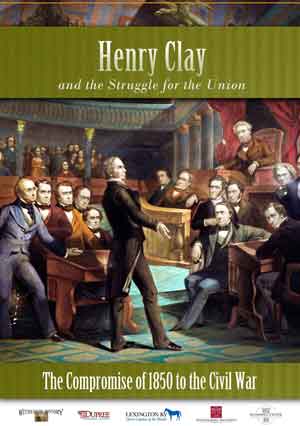Henry Clay and the Struggle for the Union explores the turbulent forty years leading up to the Civil War; it is the first documentary ever produced on Henry Clay of Kentucky, the most dominant public figure in the formulation of compromises in 1820, 1833 and 1850 that narrowly avoided disunion and civil war. This program examines the impact of slavery on the expansion of the Nation westward and how conflict between North and South, free States and slave States, was, in the end, irrepressible. Lavishly illustrated with stunning period photographs and art, footage of the Old Senate Chamber in the Nation's Capitol, dramatic scenes of Clay and his senate colleagues played by skilled professional actors and enhanced by brilliant maps, Henry Clay and the Struggle for the Union brings the history of the years before the Civil War alive on the screen. Students Will Learn: What triggered the need for compromise in 1850. What compromise measures did Henry Clay propose. Besides Henry Clay, what other senators played key roles in the Compromises of 1820 and 1833, and what roles did they play with respect to the Compromise of 1850. What United States senator saved Clay's compromise. What events, after the Compromise of 1850, helped Plunge the Nation into civil warWhere did the first hostile act of the Civil War occur.
Star Review. Henry Clay served in the House of Representatives and the United States Senate and worked to preserve the Union against the destructive forces of the slavery issue. The narration emphasizes the key events between 1820 and 1860 that led the nation to war. Using dramatic re-creations, historical documents, maps, period photographs and art, and stirring background music, the well-edited series brings the years before the Civil War to life. The seeds of the Civil War were planted at the time of the American Revolution and the writing of the Constitution. An industrial North surpassed the agricultural South in wealth and population. Westward expansion, first into the territories of the Louisiana Purchase, and later into land taken from Mexico in 1848, compounded the issues and forced the country to decide if slavery would spread to these new areas. Clay, the Great Compromiser, offered three compromises-the Missouri Compromise of 1820, the Tariff Compromise of 1833, and the Compromise of 1859-that addressed these issues and forestalled the Civil War for 40 years. Well-produced, fact-filled, and classroom-friendly, these programs should be a part of all library collections, especially during this sesquicentennial of the Civil War.-Patricia Ann Owens, Illinois Eastern Community Colleges, Mt. Carmel

 Please wait...
Please wait...




